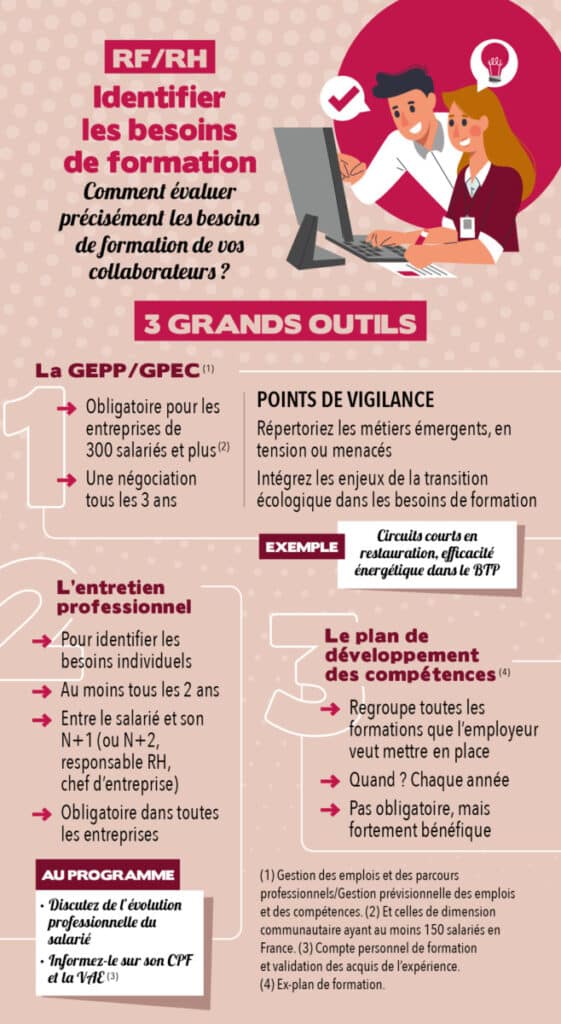How can we accurately assess employees' training needs to best serve the company's strategy? Building a relevant training policy means first and foremost thinking in terms of skills. More precisely, it involves measuring the gap between current skills and those expected. And that requires method.

There are three main tools for targeting skills and training needs.
1 - Preparing for the future with PPIM/CEPM
The management of jobs and career paths (GEPP) now encompasses the forward-looking management of jobs and skills (GPEC).
This HR management tool provides company directors of all sizes with answers to a major challenge: "How can I position the right skills in the right place at the right time to implement my company strategy?
In practical terms, the process begins with a diagnostic phase. The company must open a PPIM negotiations every 3 years.
Who is affected?
→ GEPP is compulsory for companies with 300 or more employees (and Community-scale companies with at least 150 employees in France).
→ A large number of structures are therefore not obliged to open such negotiations. But in an increasingly changing environment, the PPIM/CEFM approach can actually of interest to all companies. This is a forward-looking approach to human resources management.
Points to watch :
- Pay particular attention to emerging, short-staffed, changing or threatened occupations : classify it!
- Integrate the challenges of the ecological transition in training needs by business sector
For example: short circuits in the catering industry, energy efficiency in the building and public works sector
2 - Identifying individual needs through professional interviews
Organised at least every two yearsThe professional interview is a key moment of exchange between the employee and his employer (line manager, N+2, HR manager or the company director himself).
The professional interview programme:
- Discuss the employee's career plan and prospects for development
- Inform employees about the activation of their personal training account (CPF) and the possibilities for topping up this account
- Informing employees about validation of acquired experience (VAE)
It is therefore an opportunity to identify support and/or training needs.
Points to watch :
This meeting is mandatory :
- in all companies
- for all employees
- regardless of their employment contract
3 - Managing training with the skills development plan
The skills development plan - formerly known as the training plan - is the "scorecard" which groups together all the training initiatives that an employer wants to put in place over a given period of time.
In other words: all training initiatives designed to support the company's activity, its development projects and its strategic orientations. This includes the compulsory training required to carry out an activity or a function, as well as training aimed at adapting to the workstation, maintaining employability, increasing skills or qualifications, passing on know-how, combating illiteracy, etc.
When? The skills development plan is established annually.
Not compulsoryHowever, it is highly beneficial for all companies. It is an essential factor in performance, since it brings together economic strategy and human resources.





